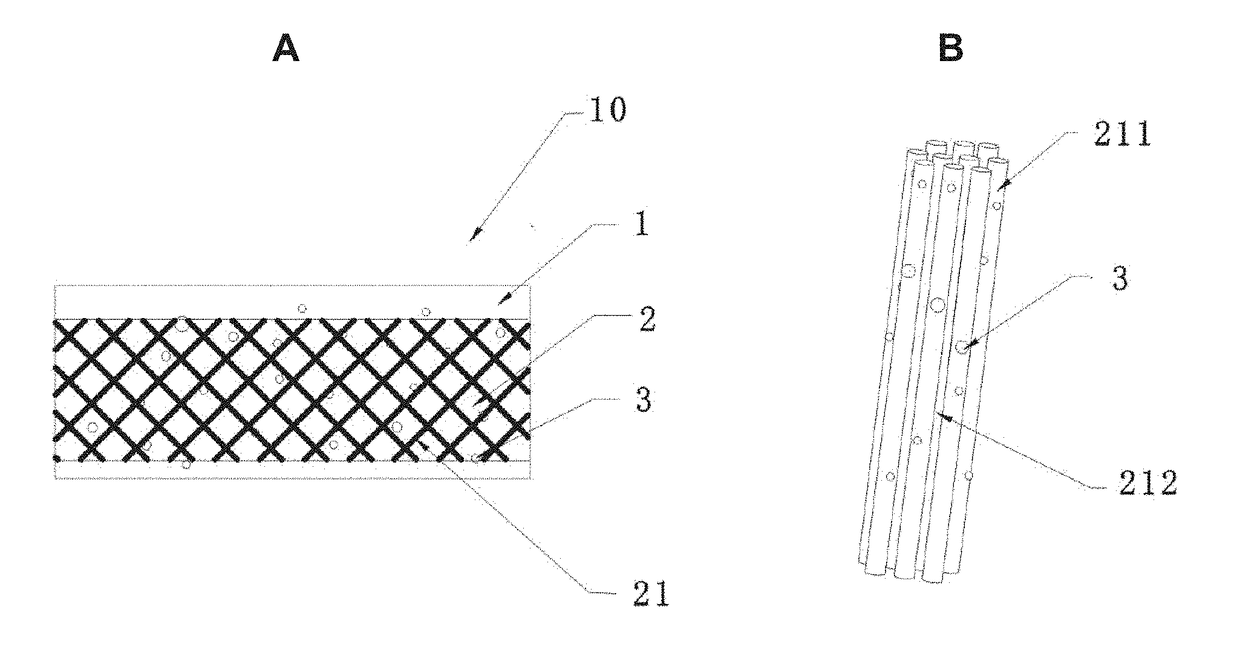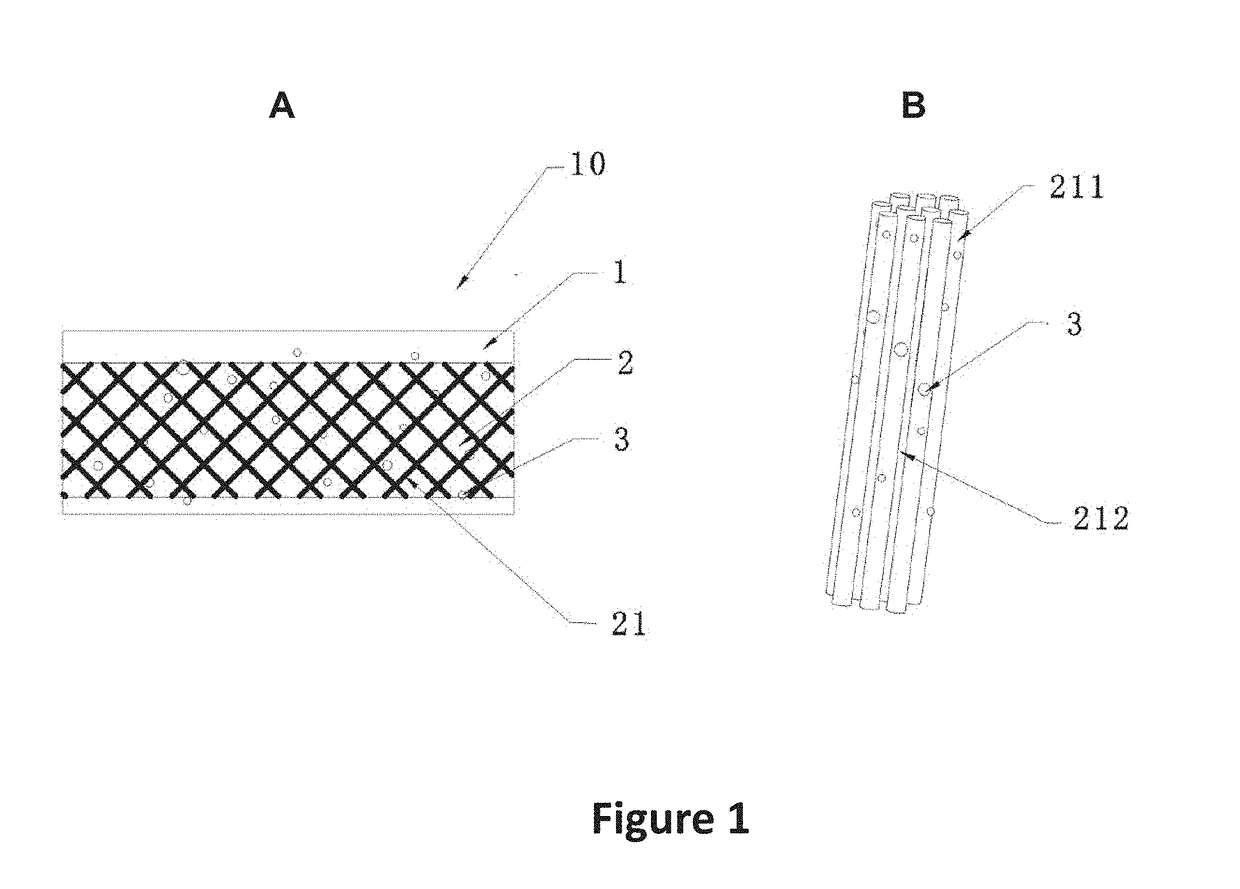Multifunctional composite skin or wound dressing as regenerative skin substitute
- Summary
- Abstract
- Description
- Claims
- Application Information
AI Technical Summary
Benefits of technology
Problems solved by technology
Method used
Image
Examples
example 1
[0169]FIG. 3 shows treatment of a patient with burn wounds using the dressing material of the present invention: male, age 10; sustained deep 2nd degree scalds by boiling water on the left ankle; wound condition worsened in a prior treatment for 4 days using a burn ointment; then treated with the inventive dressing; dressing change every 1-2 days. FIG. 3A shows that prior to the inventive treatment there was a large amount of necrotic tissue and eschar with erythema and inflammation of the wounds and the periwound areas. After one day of treatment using an embodiment of the inventive dressing, the eschar on the wounds substantially liquefied through autolytic debridement (FIG. 3B). Upon cleansing of the wounds using saline, the wounds were clean and left with a thin layer of crust (FIG. 3C). Inflammation of the wounds and the periwound areas significantly subsided. After 14 days of treatment, the wounds healed completely without obvious scarring (FIGS. 3D, E, F, G).
example 2
[0170]FIG. 4 shows treatment of a patient with burn wounds using the dressing material of the present invention: male, age 1 year and 5 months; sustained deep 2nd and 3rd degree scalds by boiling water on the right arm and hand; wound condition worsened in a prior treatment for 16 days using a burn ointment (and also due to exposure of wounds in the air in winter time resulting in tissue necrosis); high fever for several days; then treated with the inventive dressing; dressing change every 1-2 days. FIG. 4A shows that prior to the inventive treatment there was a large amount of necrotic tissue and hard eschar with erythema and inflammation of the wounds and the periwound areas, coupled with systemic inflammatory reactions. After one day of local treatment using an embodiment of the inventive dressing, coupled with systemic treatment with antibiotics and anti-inflammatory drugs, the hard eschar on the wounds substantially liquefied through autolytic debridement; upon cleansing of the...
example 3
[0171]FIGS. 5 and 6 show treatment of a mother and her son, both simultaneously sustained deep scalds by boiling water, by using the dressing material of the present invention: The mother, age 32; sustained deep scalds on the right foot and ankle; wound condition worsened to become 3rd degree wounds in a prior treatment for 18 days using two kinds of burn ointment; then treated with the inventive dressing; dressing change every 1-2 days. FIG. 5A that shows prior to the inventive treatment there was a large amount of necrotic tissue, eschars and ulcers beneath thereof, with erythema and inflammation of the wound and the periwound area. After one day of local treatment using an embodiment of the inventive dressing, the eschars on the wounds substantially softened and liquefied; upon cleansing of the wounds using saline and removal of the softened eschars, the wounds were clean (FIG. 5B) with fresh granulation tissue appearing; and inflammation of the wounds and the periwound areas sig...
PUM
| Property | Measurement | Unit |
|---|---|---|
| Fraction | aaaaa | aaaaa |
| Fraction | aaaaa | aaaaa |
| Time | aaaaa | aaaaa |
Abstract
Description
Claims
Application Information
 Login to View More
Login to View More - R&D
- Intellectual Property
- Life Sciences
- Materials
- Tech Scout
- Unparalleled Data Quality
- Higher Quality Content
- 60% Fewer Hallucinations
Browse by: Latest US Patents, China's latest patents, Technical Efficacy Thesaurus, Application Domain, Technology Topic, Popular Technical Reports.
© 2025 PatSnap. All rights reserved.Legal|Privacy policy|Modern Slavery Act Transparency Statement|Sitemap|About US| Contact US: help@patsnap.com



